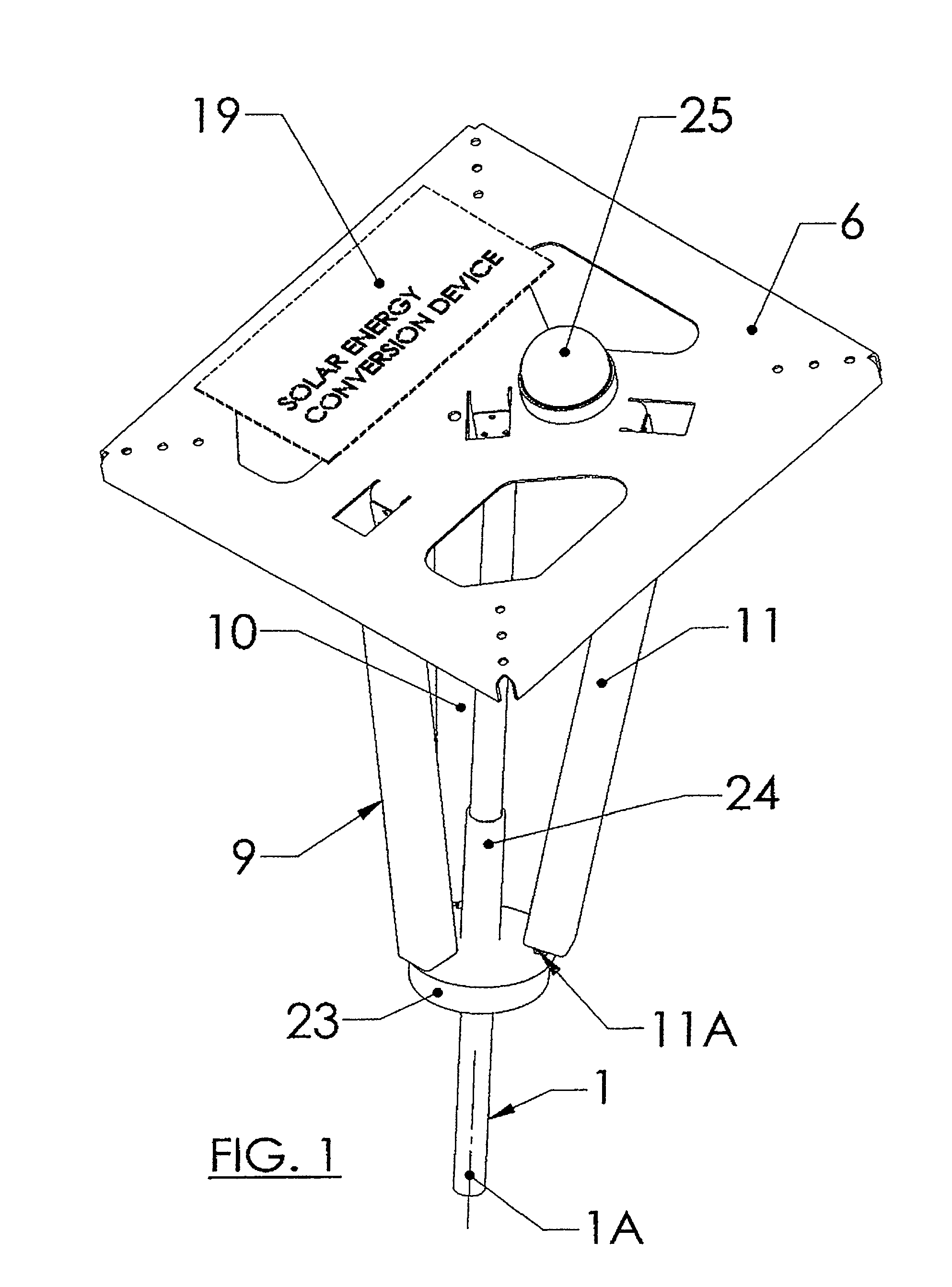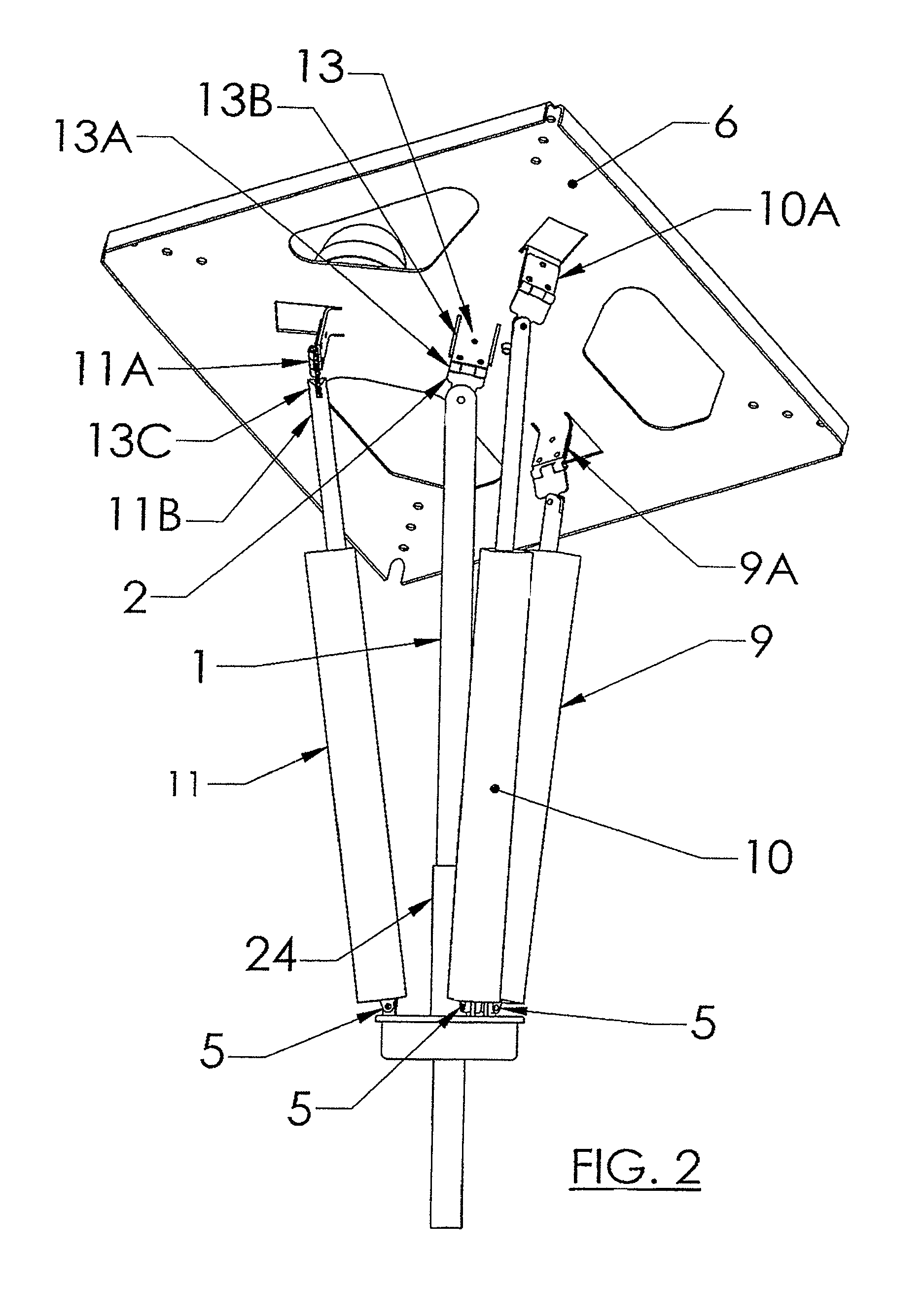Apparatus for tracking a moving light source
a technology for moving light sources and apparatuses, applied in the field of tracking devices, can solve the problems of a large number of components, a large number of mechanical components, and a limited scope of devices that rotate about only one or two axes, so as to facilitate tracking a target, reduce assembly and maintenance, and reduce the complexity of mechanical components
- Summary
- Abstract
- Description
- Claims
- Application Information
AI Technical Summary
Benefits of technology
Problems solved by technology
Method used
Image
Examples
Embodiment Construction
[0036]The system shown and described is able to track the target light source within a solid angle of approximately 5.2 steradians, that is, about 10 degrees up from the horizon in a full 360 degrees. Consequently, it can be used as a solar detector at almost any latitude on earth. As a solar panel tracker, the instant system can be used from the earthly poles in their respective summers to the Equator. Once the tracker has been installed with the payload device, only power needs to be supplied. The integrated sensor / actuator controls will power up and orient the device to the direction of the target.
[0037]Referring to FIGS. 1 and 2, the device comprises a multiaxial mechanical system including three linear actuators 9, 10, and 11. Each actuator extends and retracts linearly and has a base end (11A for actuator 11, FIG. 2), and a rod end 11B. A single support column 1 supports the entire device. The support column 1 may be mounted to a stand (portable) or permanently fixed, as in co...
PUM
 Login to View More
Login to View More Abstract
Description
Claims
Application Information
 Login to View More
Login to View More - R&D
- Intellectual Property
- Life Sciences
- Materials
- Tech Scout
- Unparalleled Data Quality
- Higher Quality Content
- 60% Fewer Hallucinations
Browse by: Latest US Patents, China's latest patents, Technical Efficacy Thesaurus, Application Domain, Technology Topic, Popular Technical Reports.
© 2025 PatSnap. All rights reserved.Legal|Privacy policy|Modern Slavery Act Transparency Statement|Sitemap|About US| Contact US: help@patsnap.com



